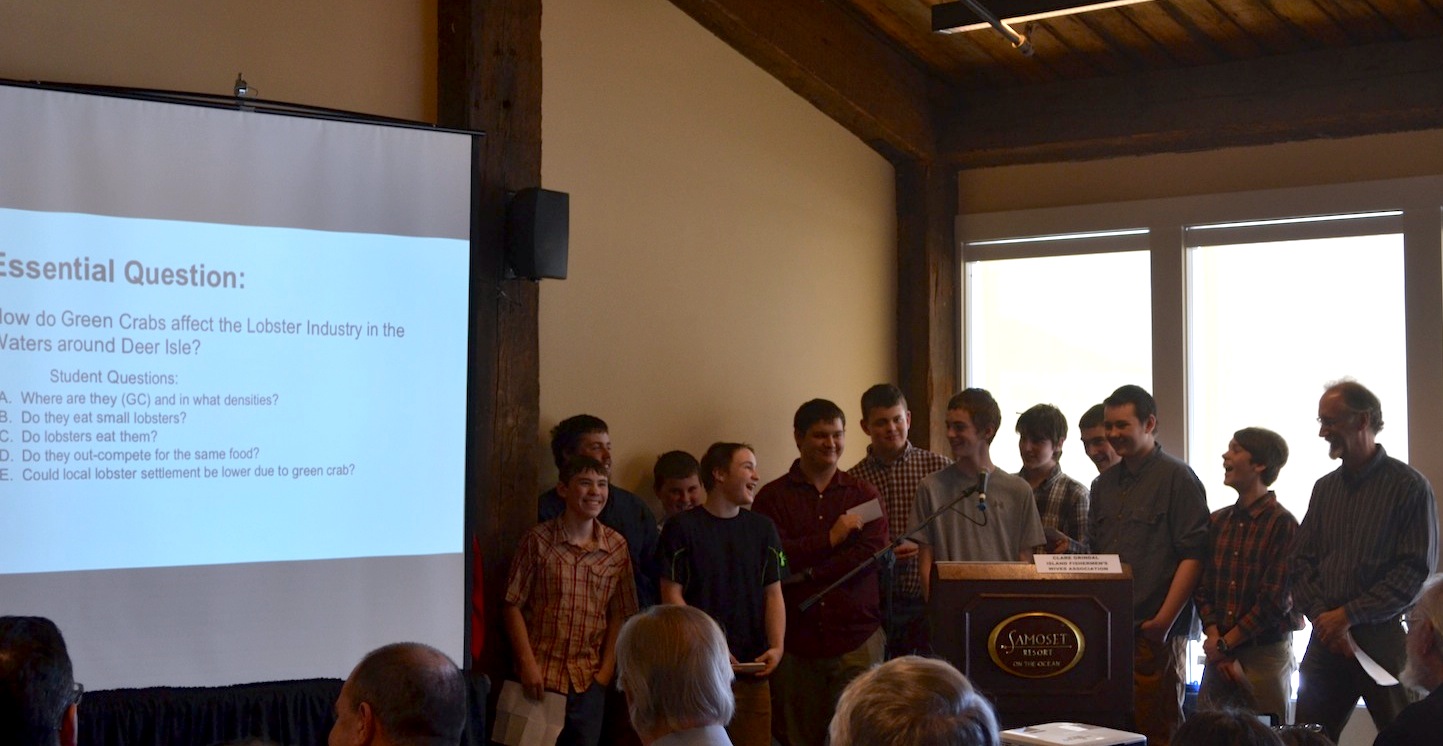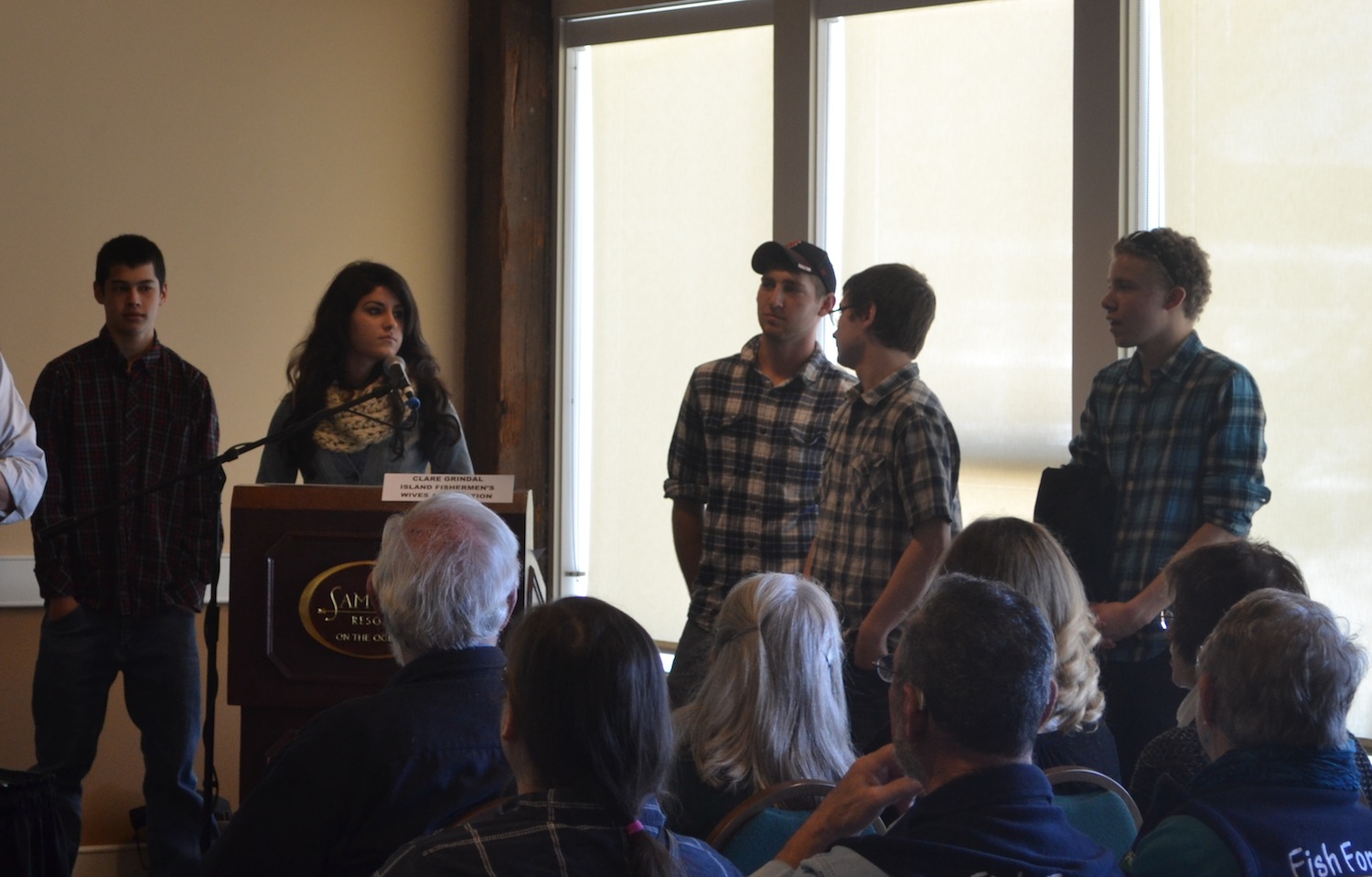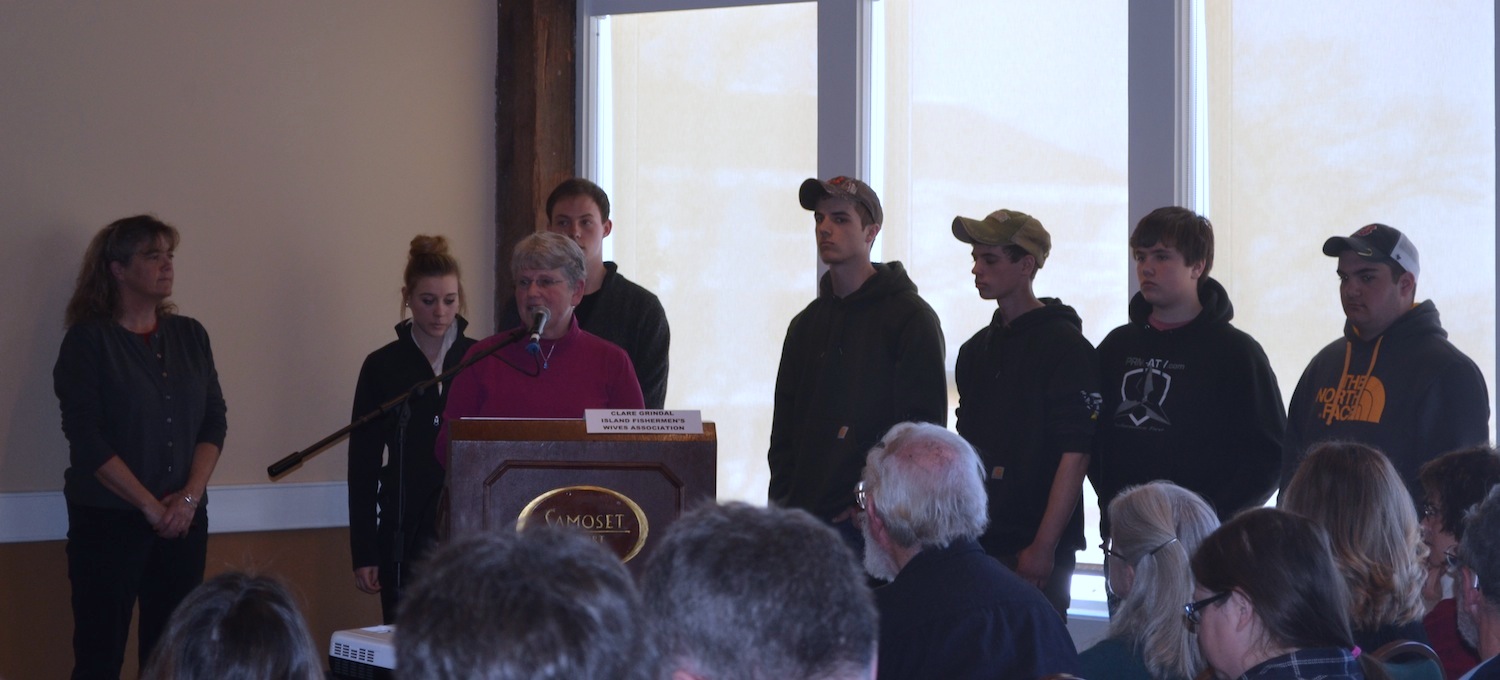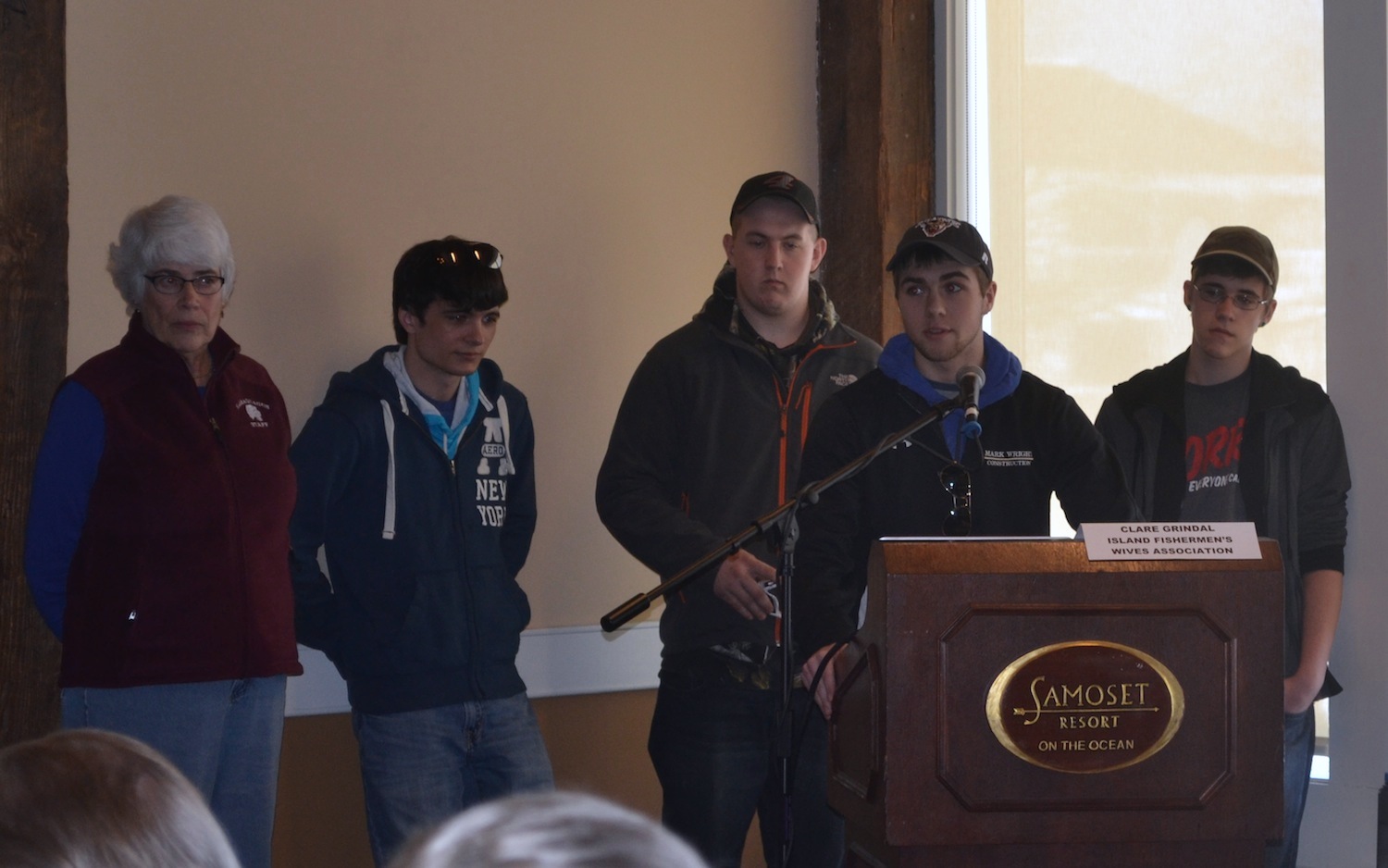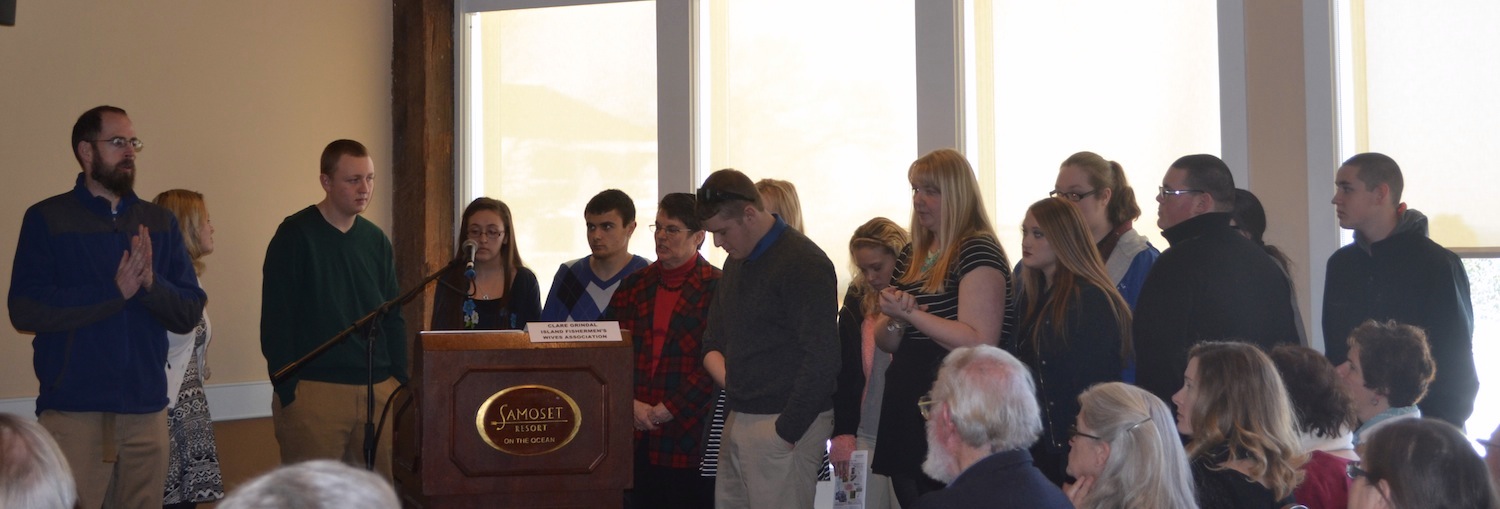We had a great time working with students from Deer Isle-Stonington High School’s Pathways 101 program: an introductory course that is focused on developing core skills so students understand the project-based learning principles that guide the Marine Studies Pathway and the Arts Pathway programs at the high school.
Students started the program with a discussion about how they operate in groups and the constructive and destructive behaviors that individuals can bring to the table to hold group work back or help group work move forward.
Students then took on two small design challenges where they competed to build the tallest tower using just 1 meter of tape, 10 pieces of spaghetti, and a marshmallow. They also worked as a group to design aluminum foil boats to hold the most rocks while still remaining buoyant in a tub of water. Both of these activities were an opportunity for students to learn how to work as a group towards a common goal, and figure out their individual strengths within the group.
Afterwards we shifted gears to talk about the issue of marine debris in our oceans. We discussed the sources of marine debris, how long it takes to degrade in the marine environment, and how marine debris can harm marine organisms through ingestion and entanglement.
The group then split into two teams, and we recorded data on marine debris we collected from along Hurricane’s shoreline. Between the two groups we collected over 400 pieces of trash ranging from pieces of fishing debris (buoys, line, and bait strapping ties) to household waste like plastic bottles and food wrappers. One group even returned with a full tire!
The next challenge was for the groups to design a sculpture using the marine debris they collected to communicate a message about some aspect of why marine debris is a problem. Students got inspired by looking at examples of how other artists have tackled the problem including Chris Jordan and Angela Pozzi.
After planning their art projects to include the materials they would use, the message they were trying to communicate, and the design they were planning to implement, students spent the whole morning on the second day working as a group to develop their marine debris sculptures.
One group chose to make a lobster that was choked up with fishing debris, showing that trash generated by the lobster industry can impact the health of the resource it is trying to harvest. The other group built a series of marine organisms entangled in marine debris including some fish made out of plastic bottles with a comb for a dorsal fin, and a seagull made out of bottles and a Styrofoam cup.
We enjoyed working with students to complete their projects and were impressed by how quickly they learned to work together as a team. This program is part of their formative assessment on group work, and we look forward to seeing the product from their summative assessment! We also appreciate their enthusiasm and dedication to help us keep Hurricane’s coastline clean!


